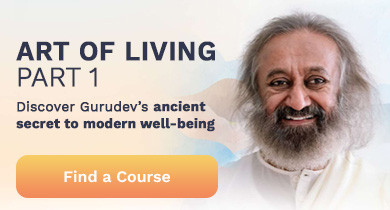
Even though you may not have noticed consciously, the breath-mind connection is very powerful. Think about it: What's the first thing you do when feeling anxious and your heart racing? Deep breathing. When you’re restless, sleepless, and nervous before a test or big interview, what’s the most common advice you’re given? “Take a deep breath.” This is because breathing helps slow your heart rate, lowering anxiety and calming your mind. Practicing some easy breathing techniques when your mind is galloping can be the most effective way to calm your mind.
Topics covered:
Breathe your way to calm
Breathwork is a more recent term for various breathing practices and techniques in which a conscious, controlled way of breathing is said to influence a person's mental, emotional, and physical state.
Straw breathing, or the Pursed lip breathing technique, can quickly reduce anxiety and panic, increase feelings of calm and relaxation, and help one think more clearly. This technique is simple; you will notice the difference in five minutes. If you have a straw, you can use it, but this can be done without an actual straw.
This is an easy technique for slowing down a person's breathing, getting more air into their lungs, and releasing trapped air from the lungs. According to Medical News Today, regular practice can help strengthen the lungs and make them work more efficiently.
The American Lung Association also recommends this breathing technique for shortness of breath caused by COPD, asthma, or other lung diseases.
How straw breathing helps anxiety
Straw breathing can help you regain a feeling of calm and can be a very useful tool for anxiety. It is like a quick healing balm. When you’re stressed, angry, or panicked, you tend to take short, shallow breaths that can increase the activity of the sympathetic nervous system, which is responsible for the “fight or flight” response.
In contrast, slow, gentle, deep breathing stimulates the parasympathetic nervous system, which is responsible for the “rest and digest response” or “relaxation response” - a resting, calm state—and reverses the effects of the sympathetic nervous system, which triggers anxiety and adrenaline.
Straw breathing benefits
Reduces stress
Calms anxiety
Eases panic attacks
How to do straw breathing
Sit comfortably with your back straight, and your face, neck, and shoulders relaxed.
If you have a straw (with a small diameter) with you, keep it ready in your hand.
Inhale fully through your nose, put the straw in your mouth, and exhale fully and slowly through the straw. Ensure you exhale fully, and be gentle; do not force the breath out.
If you don’t have the straw with you, you can make the shape of your lips as if you are holding an invisible straw in your mouth. Inhale slowly and fully, and exhale gently through the imaginary straw in your mouth.
Inhale through your nose again, then exhale through the actual/imaginary straw in your mouth.
Try to breathe down into your abdomen. Feel the rising movement of your abdomen as you inhale and the falling movement of the abdomen as you exhale.
Next, you can include some counts. For example, inhale for the count of four and exhale a little longer for the count of six to eight. Continue with this practice for about five minutes.
Watch this video guide and do the straw breathing along with the video:
Advanced straw breathing technique
A simple way to make straw breathing even more effective is to add a focus while breathing. Before you inhale, take your attention to your feet. As you slowly inhale, allow your attention to travel from your feet through your body all the way to the top of your head. As you exhale, allow your attention to naturally drift back through the body down to your feet.
Straw breathing tips
Pause slightly after the exhalation to allow the inhalation to start naturally. Do not force the breath or strain; just wait for the feeling of the inhalation to come spontaneously.
Become aware of the natural pause of stillness between breaths. In these pauses, notice the sensation of calm and stillness.
After about 5 minutes, make some observations. How much has your breathing slowed down? Do you still feel anxious? Are you feeling calmer? What is your experience following this practice?
The ultimate anxiety solution
If you struggle with anxiety regularly, you can address the issue at a deeper level by learning the ultimate breathing technique, SKY Breath Meditation. A regular practice of SKY has many benefits, including:
- Significant decrease in clinical/non-clinical anxiety and depression
- Reduced stress hormones
- Reduced PTSD symptoms
- Enhanced deep sleep
- Greater mental focus
- Enhanced optimism
Experience SKY for yourself; register for the Art of Living Part 1 course today.
Sending you blessings for more calm and peace of mind!
Related articles
Comprehensive Guide to Breathing Exercises for Stress Relief and Lung Capacity
Breathing Exercises for Sleep: Say Goodnight to Insomnia!
The Nose Knows: BioHacking Energy Flow Through the Nostrils
Meditation Breathing Techniques: The Link Between Breath and Mind
Breathing Patterns and Your Wellbeing: Find Out the Secret!
Breath: The New Science of a Lost Art- A Book Review
Why Diaphragmatic Breathing is Your New Zen Best Friend
Kapalbhati Pranayama: How to Do Skull Shining Breath
Lung Exercises: Train Your Breathing Muscles and Respiration




























